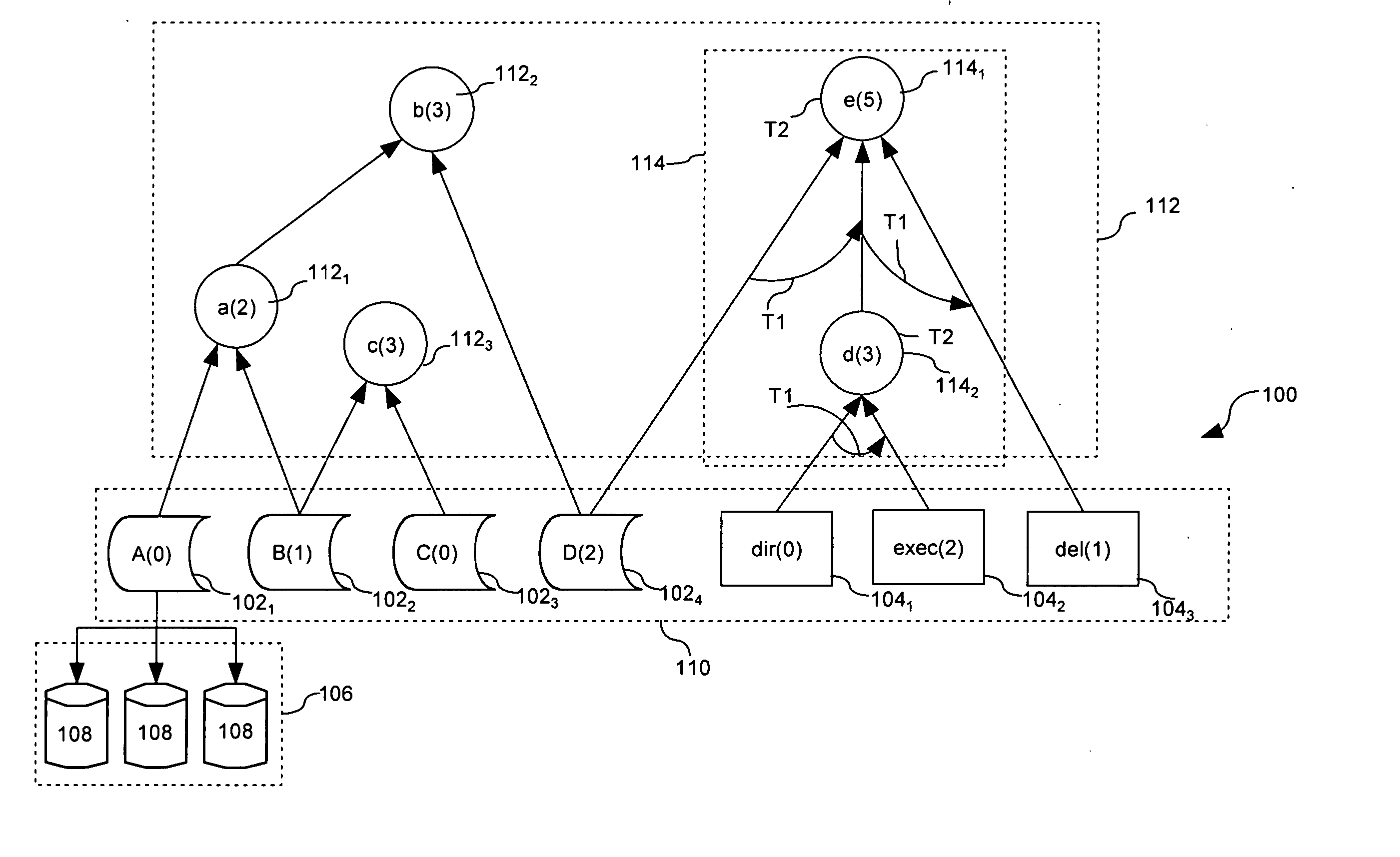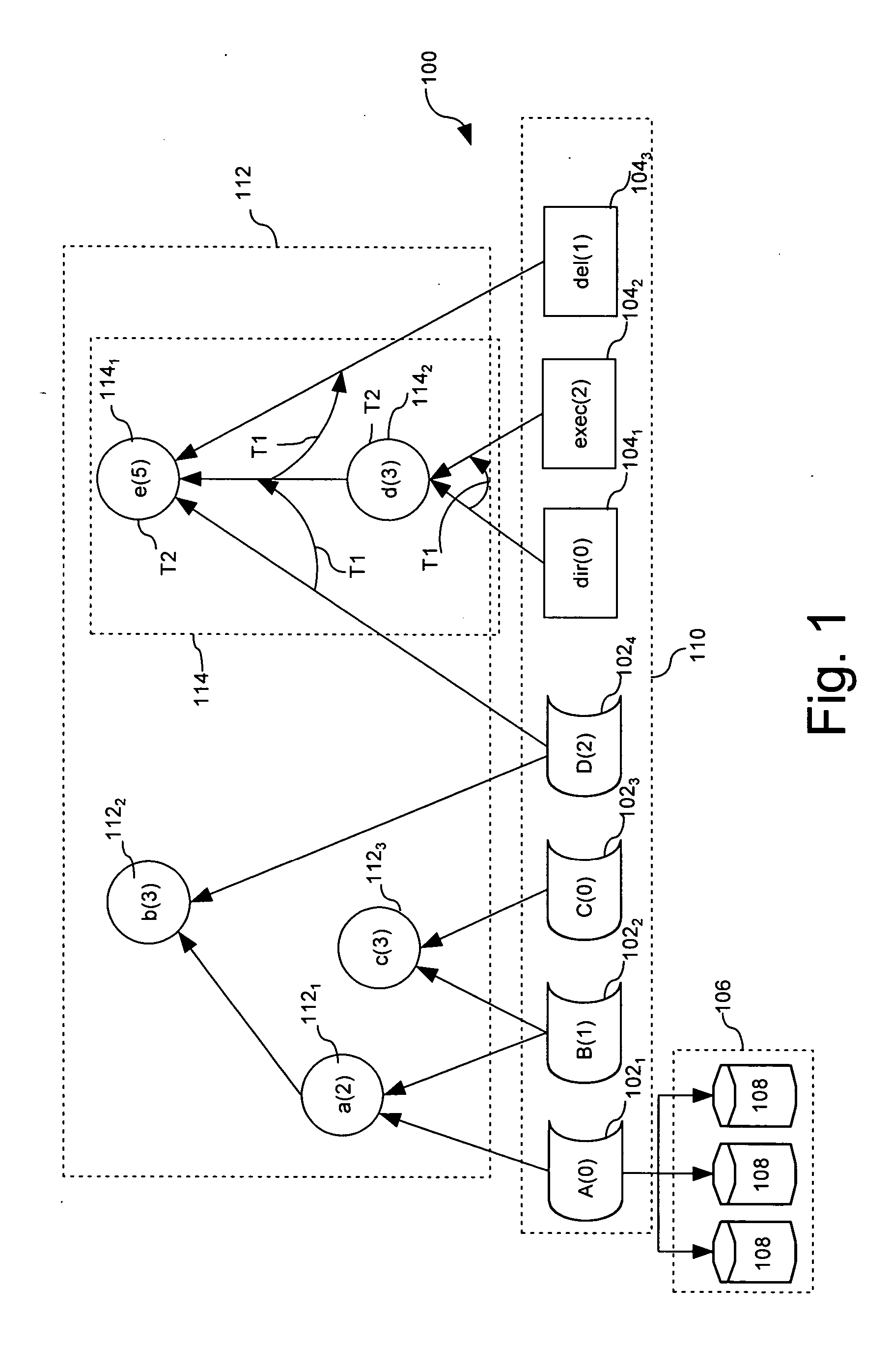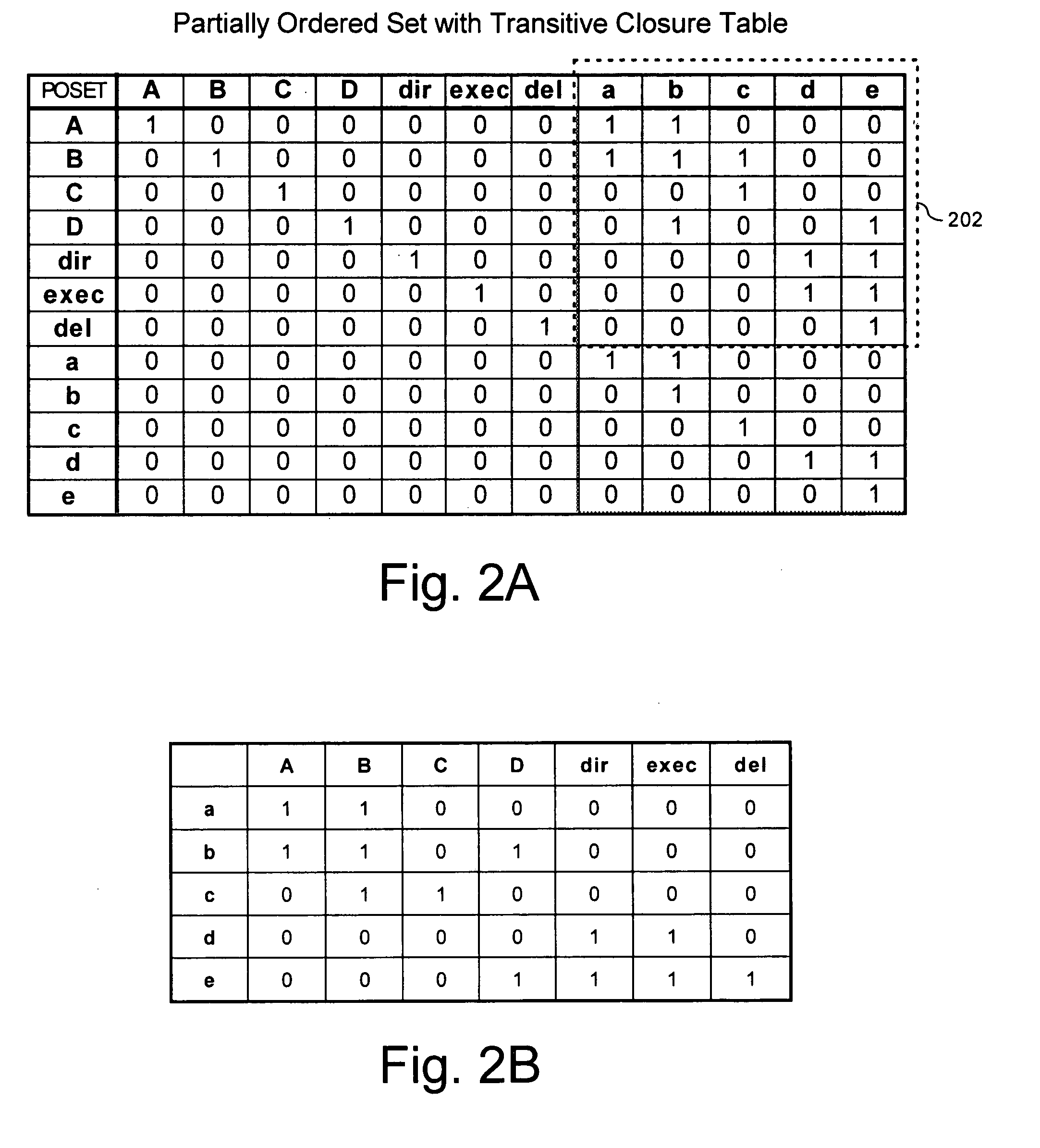Enforcing computer security utilizing an adaptive lattice mechanism
a technology of adaptive lattice and computer security, applied in the field of computer and information security, can solve problems such as limitations to such an approach, system security not based on security, and control of information and computer system resources is a continuing problem
- Summary
- Abstract
- Description
- Claims
- Application Information
AI Technical Summary
Benefits of technology
Problems solved by technology
Method used
Image
Examples
example 1
[0041] Referring to FIGS. 1 and 8, consider the case in which access authorization for users 1-5 is established in accordance with PUAT in FIG. 8A. User 2 with access level 1, U2(1) can request access to an object 1021 of information type A as previously described in relation to step 604. In accordance with step 606, the system consults the TOT (Temporal Order Table) in FIG. 8B and determined that the access request time does not complete a temporal access pattern. Subsequently, the request is logged in the (Temporal Access Table) as provided in step 610. In accordance with step 612 the request is tested to determine if user 2 has a sufficiently high level of access authorization. In this case U2(1)≧A(0) and therefore access is granted to the requested information type A in accordance with step 616.
[0042] Thereafter, in step 702 the computer system can identify aggregations with object A using the CCT (Combinatorial Classification Table) in FIG. 8C. In step 704, the system checks t...
example 2
[0046] Referring to FIGS. 1 and 9, consider the case in which access authorization for users 1-5 is established in accordance with PUAT in FIG. 9A. User 3 with access level 2, U3(2) can request access to an object 102, of information type A as previously described in relation to step 604. In accordance with step 606, the system consults the TOT (Temporal Order Table) in FIG. 9B and determined that the access request time does not complete a temporal access pattern. Subsequently, the request is logged as provided in step 610. In accordance with step 612 the request is tested to determine if User 3 has a sufficiently high level of access authorization. In this case U3(2)>A(0) and therefore access is granted to the requested object 102, in accordance with step 616.
[0047] Thereafter, in step 702 the computer system can identify aggregations with object A using the CCT (Combinatorial Classification Table) in FIG. 9C. In step 704, the system checks to determine if the minimum required se...
PUM
 Login to View More
Login to View More Abstract
Description
Claims
Application Information
 Login to View More
Login to View More - R&D
- Intellectual Property
- Life Sciences
- Materials
- Tech Scout
- Unparalleled Data Quality
- Higher Quality Content
- 60% Fewer Hallucinations
Browse by: Latest US Patents, China's latest patents, Technical Efficacy Thesaurus, Application Domain, Technology Topic, Popular Technical Reports.
© 2025 PatSnap. All rights reserved.Legal|Privacy policy|Modern Slavery Act Transparency Statement|Sitemap|About US| Contact US: help@patsnap.com



